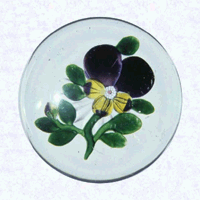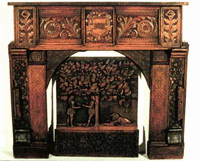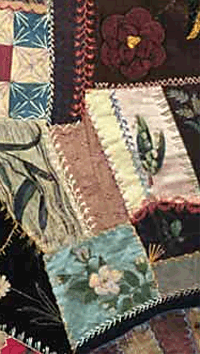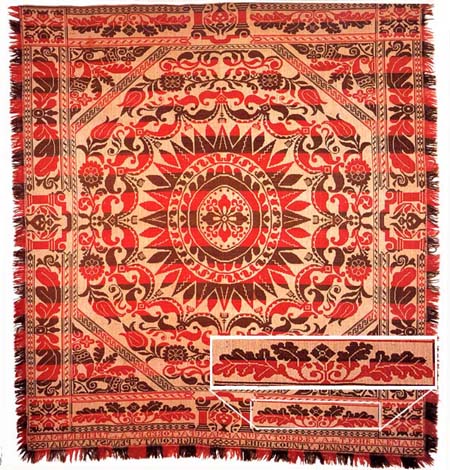 Objective:
Objective:
1) Students will be able to research to identify flowers and their symbolism
in art, literature, and design as they appeared in Victorian times from 1850
to 1900, as exemplified in furniture, quilt, paperweight, embroidery, and
other designs.
2) students will create a simplified or stylized design motif with symbolic
content and apply it to a particular art or literary form (draw, paint, carve,
or write a poem, for example).
Pansy
symbolizes Thoughts
Grades:
4 and above
Time Required: one 60-90 minute class period
Illinois State Museum's Online collections:
https://www.museum.state.il.us/exhibits/barker/gallery/index.php?TopicID=lampwork
The Morton D. Barker Paperweight Collection of the Illinois State
Museum. https://www.museum.state.il.us/muslink/art/htmls/ms.html
A Matter of Style: Victorian Furniture in MuseumLink Illinois,
Illinois State Museum
https://www.museum.state.il.us/muslink/art/htmls/ks.html
Keeping Us in Stitches: Illinois Quilts, MuseumLink Illinois, Illinois
State Museum. Appliqué, whole cloth, and Pieced (crazy) quilts have
floral motifs on them. https://www.museum.state.il.us/muslink/prairie/htmls/eco_fg_all.html
MuseumLink Illinois Prairie Module's Prairie Plant Guide with photographs.
https://www.museum.state.il.us/ismdepts/botany/collections/?TopicID=prairieherbs
Illinois State Museum's Herbarium Collection Gallery of Herbarium sheets
 Motivation:
Motivation:
Everyday we see flower motifs in artwork, furniture and architectural ornamentation,
fabric design, and in literature and bookbinding. In the past in many cultures,
flower motifs carried symbolism relating to religion, celebration, or superstition,
and many other things. Perhaps the original symbolism of some ofthe motifs
has been lost. We appreciate the beauty of the lampworked flowers in the French
paperweights, but do we ask ourselves why the makers may have chosen the flowers
they chose?
Motifs
on Mantel and Screen: Apple is Temptation, Sunflower is Haughtiness
Raspberry isRemorse
The
Victorians liberally incorporated symbolism in the design of everyday
objects and decoration. A popular book of the time was The Language
of Flowers, which was a list of hundreds of flower names and a short
definition of the symbolism of each. (Several versions of this can be
found on the WWW).
Victorian
novels and poetry also contain symbolic motifs. This symbolism can be traced
back through the Renaissance and the Middle Ages to Ancient Rome, Greece,
and Egypt. The floral and plant symbols occur again and again. By examining
a Victorian object carefully and searching sources for the symbolism, you
can learn more about what the Victorians appreciated about the designs. By
observing these objects, you can see what designs have survived or evolved
into our era and become more aware of the history of design.
Are there
many remnants of them today? (Look at bridal and funeral customs Web sites)
https://www.weddingbokay.com/symbol.html
https://www.tombstonetravel.com/symbol.html
Furniture designers such as Ethan Allen™ create designs that have modified
Victorian motifs. https://www.ethanallen.com/ea/com.ethanallen.ecom.HomePageServlet
Materials:
computer
Internet access
flower/plant worksheet
pencil/pen
 Procedure:
Web Quest
Procedure:
Web Quest
1) Students will choose a flower motif on an object to research on the Internet
from those depicted in the ISM Web exhibits listed above, or use a Victorian
object they may bring from home. They will find the symbolic meaning of the
flower or plant from a web site on symbolism (checking against other sites
for consistency), and write a brief description or history of the symbolism.
2) Students will show how they would adapt their flower and its symbolism
by creating a simple drawn motif of the flower and tell how they would incorporate
it into an object today.
Presentation: Post the designs and their description of the symbolism
for the whole class to see.
Quilt
Motif: Lily of the Valley means Return of Happiness
Assessment:
Student found the flower and its symbolism successfully on at least one Web
site. (5 points per site)
Student wrote a short but clear description of the symbolic history of the
flower. (10 or fewer points)
Student drew a simplified, but recognizable flower symbol of his flower to
use as a design motif and told what the symbolism was. (10 or fewer points)
 Illinois
State Board of Education Goals and Standards Addressed:
Illinois
State Board of Education Goals and Standards Addressed:
Social Sciences: Goal 18.A.3: Middle School/Junior High: Explain how language,
literature, the arts, architecture, and traditions contribute to the development
and transmission of culture.
Visual Arts: Goal 27.B.3: Know and describe how artists and their
works shape culture and increase understanding of societies, past and
present.
Coverlet
Motifs:
Red Tulip: Declaration of Love
Oak Leaf: Strength; eternity
References:
https://www.victorianbazaar.com/meanings.html
a site that lists the symbolism of flowers.
Carr-Gomm,
Sarah (1996). The Dictionary of Symbols in Western Art. Facts on File.
Ferguson,
George Wells (1972). Signs and Symbols in Christian Art. Oxford University
Press.
Hall, James
A. (1979). Dictionary of Subjects and Symbols in Art. HarperCollins.
Ibid. (1995)
Illustrated Dictionary of Symbols in Eastern and Western Art. HarperCollins.
Speake, Jennifer (1995). The Dent Dictionary of Symbols in Christian Art.
Trafalgar Square.

